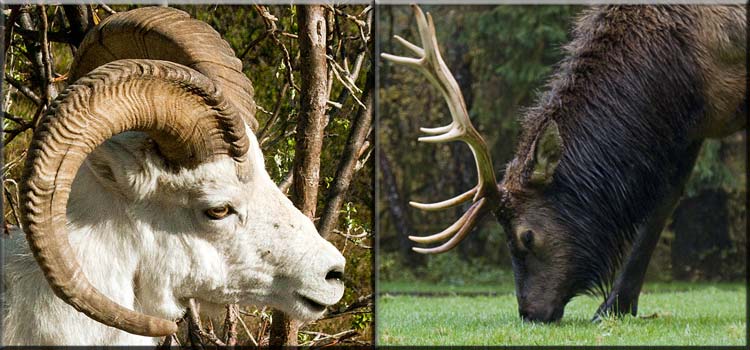
Though commonly used interchangeably, the difference between antlers and horns is actually great in terms of their structures, lifespans, and even uses. The weasel knows a few white-tailed deer who take serious offense at being associated with those horned animals. So let’s get a few things straight.
Structural Difference between Antlers and Horns
Structure of Antlers
We’ll begin with antlers. Antlers are considered a single structure that begins growing as cartilage as an extension of the animal’s skull. This cartilage is then covered by a hairy skin referred to as velvet, which carries blood vessels and nerves to the antlers to aid in their growth.
Antlers are also typically only found on males of the antlered species (with the exception of caribou, whose females also have antlers). As if by clockwork, by rutting or breeding season the raging hormones in the male’s body induce a process called ossification, which prompts the cartilage of the antlers to convert to bone. During this process, the velvet covering the antlers will die and shed. Though a structure made of bone might have the appearance of permanence, is it only months after this ossification that the animal will shed his antlers, only to begin the whole process again in several weeks growing even larger antlers with each cycle.
Structure of Horns
Horns, on the other hand, are a two part structure that is comprised by a core made of bone, which rather than covered by velvet is covered by keratin (the same material found in human hair and fingernails, and oddly enough the culprit behind that harsh smell of burnt hair). This exterior sheath of keratin is grown by special hair follicles. Unlike antlers, horns are permanent. They are not shed, and they continue to grow through the animal’s life. To that point, if an animal’s horn becomes broken or damaged, it cannot heal itself or grow back and will therefore remain that way.
Horns can be found on both genders of horned species, though they still have their differences. For instance, horns on males tend to be thicker at the base and have the ability to withstand more force whereas the females tend to have horns that are both straighter and thinner, making them better tools for stabbing and defensive actions (so don’t screw with the ladies!). Horns also vary in length and shape among the animals who bear them, but they never take on the same branched appearance of antlers.
Use Difference between Antlers and Horns
The difference between antlers and horns doesn’t end at their structures. Each species has different uses for their antlers or horns. For instance, reindeer and caribou use their antlers like snow shovels to clear a path to the vegetation, otherwise known as dinner, underneath. In other antlered animals, antlers may act as a hearing aid of sorts, effectively amplifying sound like a parabolic reflector. Some horned animals use them for cooling as the blood vessels in the bony core allow the horns to function as a radiator. But there are a few uses that appear in both antlered and horned species.
Mate Selection
Among most antlered creatures, antlers take on a primary function in sexual selection in two forms. The first is as a male behavioral prop: think impressing those females simply by displaying your large, um, antler asset or by using your antlers as weapons in male-to-male antlered combat. The second form may be simply as a determinant of the female’s mate choice. While size might matter, female discrimination does seem differ by species as the shape, size, and function of antlers vary. Different strokes for different folks.
Horns also seem to have some relevance in the mating process in terms of mating priority. Many horned animals use those very horns in courtship rituals. The blue wildebeest, for example, strip the bark and branches off trees to impress the female and lure her into his territory. Wow, that’s a sexy pile of bark.
Dominance, Territory, Protection
Antlers and horns have also been used as a tools for fighting and self defense against predators and even members of their own species in battles for dominance and territory definition.
Test Your Knowledge and Fun Facts
So now that you know the differences between antlers and horns, do you think you could match the antler or horn to the animal? Check out this game to test your skills.
Fun Fact about Antlers: It’s a common misconception that a deer’s age can be determined by the size or the number of points it has on its antlers. While male deer take great pride in the size of their antlers (sound familiar?), they do not necessarily have a direct correlation to age. Horns, on the other hand, can be a useful, if imprecise, method of determining certain horned species’ ages.
